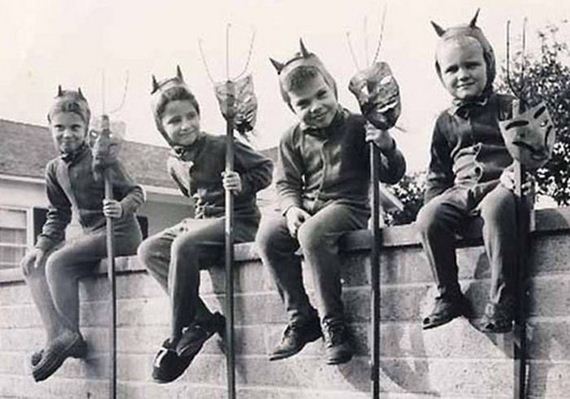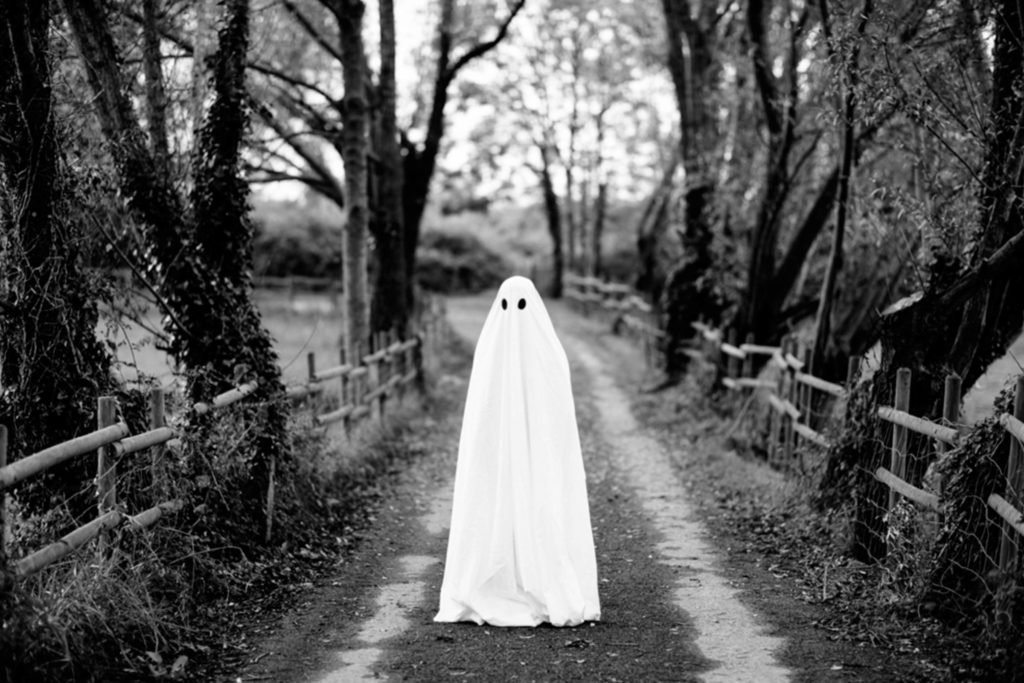Over the past couple of weeks we’ve given you a list of Halloween events so sweet, they’ll only be outdone by the mountains of candy your little ones consume during the festivities. But as you begin to prepare your best costume, mix up some delicious potions — for children and parents alike, of course — and carve out a pumpkin or two, we thought we’d take a look at the history behind this mysterious holiday, as well as a few of the traditions associated with it.
The Mystery of Halloween History
The first iteration of Halloween was Samhain (pronounced sow-in), a harvest festival celebrated by the Celts who resided in the areas of Ireland, Great Britain, and Northern France, roughly 2,000 years ago. According to the Celtic calendar of yore, the new year began on November 1, and as such, they would celebrate Samhain on October 31, marking the end of the summer harvest.
Samhain was a harbinger of the impending dank and frigid winter, a time that correlated with an uptick in death. With all things macabre at the front of the Celts’ minds, it was believed that as darkness fell, and one year turned into the next, the metaphysical wall that separates the world of the living from that of the dead would thin out, allowing transitory spirits to exist alongside mortal beings.
As ghostly entities are wont to do, these disembodied mischief makers would wreak havoc on any remaining crops and generally just cause trouble for the villagers. Yet it was also believed that their presence in the material world enabled the Druids, or Celtic priests, to make predictions about the future. Thus the townsfolk would light celebratory bonfires upon which crops and animals were sacrificed to appease the spectral visitors. During these rituals the Celts would wear animal heads and skins, thus giving us the longstanding tradition of donning costumes for Halloween. Additionally, it was the Celts who first decided to hollow out gourds and turn them into lamps, leading to the fun of pumpkin disemboweling and jack-o-lantern making.
Fast forward a few hundred years to 43 AD, and the Roman Empire had successfully overtaken large swaths of the Celtic lands. Over the course of the next 400 years, the Romans absorbed Samhain into two of their own festivals. One was Feralia, and the other a day to honor the goddess of fruit and trees, Pomona. The former was held in late October and was a remembrance of those who had passed on, thus keeping October and dead souls inextricably linked. The latter was ostensibly a harvest festival, however given that the symbol for Pomona was an apple, it’s thought that this could be the inspiration behind the tradition of bobbing for apples (more on this later).
Halloween Becomes Halloween
It wasn’t until the 9th century, when Christianity began to take root in Celtic lands and traditional Celtic rites were all but obliterated by church-sanctioned festivals, that the name Halloween was bestowed upon Oct 31. As the story goes, around 1000 A.D., Christendom had made November 1 All Saints’ Day and November 2 All Souls’ Day, a feeble attempt at claiming the Celtic festival of the dead as their own. There wasn’t a huge difference between All Souls’ Day and Samhain; both involved bonfires, parades, and dressing up, though by this point the practice of wearing animal hides had given way to dressing as saints, angels, and devils. Nevertheless, All Saints’ Day was colloquially known as All-hallows or All-hallowmas, which came from the Middle English translation of All Saints’ Day, Alholowmesse. And much like Christmas Eve, the night prior was called All-Hallows Eve, which, you guessed it, eventually turned into Halloween.

Trick or Treating for the Masses
Another tradition indebted to All Souls’ Day and the church is our much-loved practice of trick-or-treating. During the festivities and parades in England, poorer citizens in the community would ask for food from wealthier families, who would provide them with pastries called ‘soul cakes,’ in exchange for a prayer for the family’s deceased relatives. The church was more than happy to see families feed the poor and hungry, as this tradition quickly supplanted the more ancient practice of leaving food and wine on the streets for roaming spirits.
At some point children decided to get in on the action, and they too would go door to door asking for ale (I know, right?), food, and money. Whereas today we call this ‘trick-or-treating,’ in merry ol’ England these kids were said to be, “going a-souling.”

I’m Just a Ghost Like You
In addition to the Celtic roots of dressing up for Samhain, there was also a precedent set in Europe. That is, during the winter months, nights were cold, dark, and long. Thanks to the notion that otherworldly visitors would stop by on Halloween night, many people were afraid to leave their houses for fear of running into one of these ghoulish characters. If however, necessity demanded that you leave the house, people would wear masks in the hope that the ghosts would mistake them for fellow spirits. What’s more, folks would leave bowls of food outside their homes to feed the marauding phantoms.

Forgotten Rituals
At this point you can kind of see all the pieces of our modern-day Halloween festivities falling into place. But what about the lesser-known traditions and rituals that didn’t make it into the 21st century? Well, apparently, many of these practices were concerned more with the future of the living than with those who had died in the past.
Interestingly, many of these rituals were in fact based around young single women hoping to find a husband in the coming year. For instance, in 18th-century Ireland, a cook might bury a ring in some mashed potatoes on Halloween night, and the diner who found that ring would soon be blessed with eternal love. Whereas in Scotland, diviners would instruct women to take a hazelnut for each man she hoped to marry and toss them into a fire. Whichever nut burned up instead of exploding would be indicative of who the woman would marry.
There were actually two traditions in this vein that had to do with apples; one in which a woman would peel an apple in a single slice and then throw the peel over her shoulder. Whichever letter the peel came to resemble would be the same initial of her betrothed. The other tradition goes back to bobbing for apples, and states that the most successful apple-bobber of the bunch would be the first to walk down the aisle.
So whatever the reason you celebrate Halloween, just know that you’re carrying on a proud tradition that goes back millennia, and that if there are any spirits roaming the streets on Halloween night, your trick-or-treating and playful pranking is sure to make them proud.
Photos: Barnorama.com, Mentalfloss.com, Readersdigest.com, Mcgill.ca




